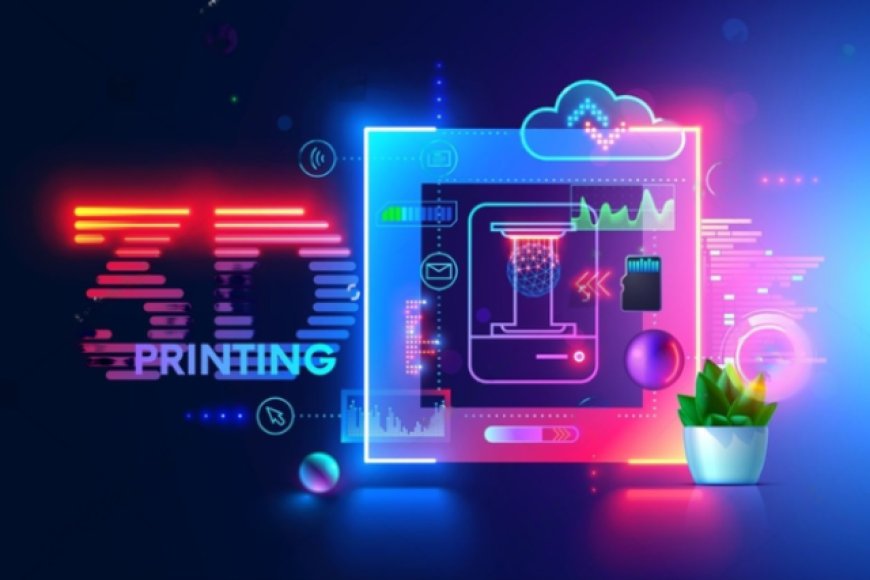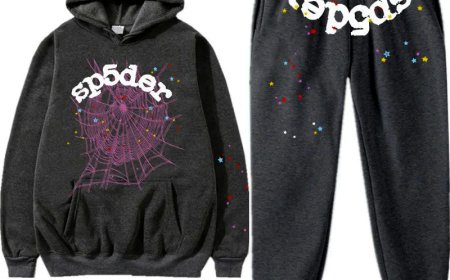3D Printing Speeds Up Fashion Accessory Production in Dubai
In the fast-paced fashion industry of Dubai, speed is essential for staying ahead of the competition. As trends change rapidly, designers must produce new accessories quickly to keep up with demand.

In the fast-paced fashion industry of Dubai, speed is essential for staying ahead of the competition. As trends change rapidly, designers must produce new accessories quickly to keep up with demand. 3D printing has emerged as a game-changer in this space, significantly reducing production time for fashion accessories.
With the ability to create custom designs, speed up prototyping, and cut down on manufacturing steps, 3D printing is transforming how fashion accessories are made. This article will explore how 3D printing is helping Dubai designers cut production time and stay at the forefront of the fashion world.
1. Direct-to-Production Process
Traditional manufacturing methods often involve multiple stages, such as cutting, molding, and assembling, which can be time-consuming. 3D printing Dubai, on the other hand, simplifies the process by creating accessories directly from digital designs. This eliminates the need for complex manufacturing steps, reducing overall production time.
In Dubai’s fashion industry, designers can now go straight from concept to production with minimal delay. The digital file of a fashion accessory is uploaded to the 3D printer, and the piece is printed in a matter of hours. This streamlined process is particularly beneficial for time-sensitive projects, such as fashion shows or seasonal collections.
2. Rapid Prototyping
Before 3D printing, creating prototypes for fashion accessories was a slow and expensive process. Traditional methods required designers to create molds or work with artisans to manually produce the first samples. This could take weeks or even months, delaying the final production.
With 3D printing, designers in Dubai can quickly produce prototypes to test designs, materials, and functionality. Once a digital design is ready, a prototype can be printed in just a few hours. If changes are needed, the designer can easily modify the digital file and print another version without lengthy delays.
This ability to rapidly prototype significantly speeds up the design process, allowing designers to bring new fashion accessories to market faster.
3. On-Demand Production
One of the key advantages of 3D printing is the ability to produce fashion accessories on demand. Traditional manufacturing often requires mass production, where large quantities of accessories are made in advance. This can lead to overproduction and wasted time if the accessories do not sell as expected.
In contrast, 3D printing allows designers in Dubai to produce accessories only when an order is placed. This on-demand production model eliminates the need for large inventories and reduces lead times. Designers can quickly respond to customer orders and produce the exact number of pieces required.
For example, a custom jewelry order can be designed, printed, and delivered within days, whereas traditional methods might take weeks. This flexibility in production is helping Dubai’s fashion industry meet the demands of its fast-paced, luxury market.
4. Customization Without Delay
Customization is a key trend in Dubai’s fashion industry, and 3D printing makes it easier and faster than ever before. Traditional manufacturing processes often involve time-consuming steps to customize fashion accessories, such as altering molds or handcrafting individual pieces.
With 3D printing, customization can be done with just a few clicks. Designers can adjust the digital design to meet a client’s specific preferences, whether it’s resizing a bracelet, adding personal engravings, or modifying the shape of a pendant. Once the customization is complete, the accessory can be printed immediately.
This quick turnaround allows designers to offer personalized accessories without delaying the overall production process. In a city like Dubai, where luxury and exclusivity are key selling points, the ability to deliver custom accessories quickly is a major advantage.
5. Reduced Material Waste
Another factor that contributes to faster production is the reduced material waste that comes with 3D printing. Traditional manufacturing often involves cutting large pieces of material and discarding excess parts. This process not only wastes time but also adds unnecessary steps to the production timeline.
3D printing creates accessories layer by layer, using only the exact amount of material needed for each piece. This method minimizes waste and speeds up production by eliminating the need for additional material handling or disposal steps. In Dubai, where designers are increasingly focused on sustainability, 3D printing’s efficiency is a major benefit.
By reducing material waste, designers can cut down on production times and focus more on creating high-quality, unique fashion accessories.
6. Simplified Supply Chain
The supply chain for traditional fashion accessories is often long and complex, involving multiple suppliers, manufacturers, and logistics providers. Each step in this chain can lead to delays, especially when sourcing materials or outsourcing manufacturing to different countries.
3D printing simplifies this supply chain by allowing designers to produce accessories in-house. Instead of waiting for materials or relying on third-party manufacturers, designers in Dubai can print their accessories locally, cutting out many of the steps that traditionally cause delays.
This localized production model not only saves time but also gives designers more control over the entire process, from design to delivery.
7. Speeding Up Iterations and Improvements
In fashion, making improvements or changes to a design is often necessary, whether it’s based on feedback from customers or evolving trends. With traditional methods, these changes can take time, especially if new molds or tools need to be created.
3D printing allows for quick design changes and iterations. Once the designer makes adjustments to the digital file, the updated accessory can be printed immediately. This flexibility ensures that designers can quickly respond to market demands and continuously improve their products without significant delays.
Conclusion
3D printing is revolutionizing the fashion accessory industry in Dubai by significantly reducing production time. From rapid prototyping and on-demand production to simplified supply chains and reduced material waste, 3D printing offers numerous advantages over traditional manufacturing methods.
As Dubai continues to embrace cutting-edge technology in its luxury fashion market, 3D printing will play an increasingly important role in helping designers meet the demands of this fast-paced industry. With the ability to create custom accessories quickly and efficiently, 3D printing is set to transform the future of fashion in Dubai.
What's Your Reaction?














![Noots Focus Reviews [Truth Exposed 2025]!](https://news.bangboxonline.com/uploads/images/202501/image_430x256_678e3b94881a1.jpg)
![Vivalis Male Enhancement: The Must-Know Ingredients [2025 Update]](https://news.bangboxonline.com/uploads/images/202501/image_430x256_678e3b54e396c.jpg)








